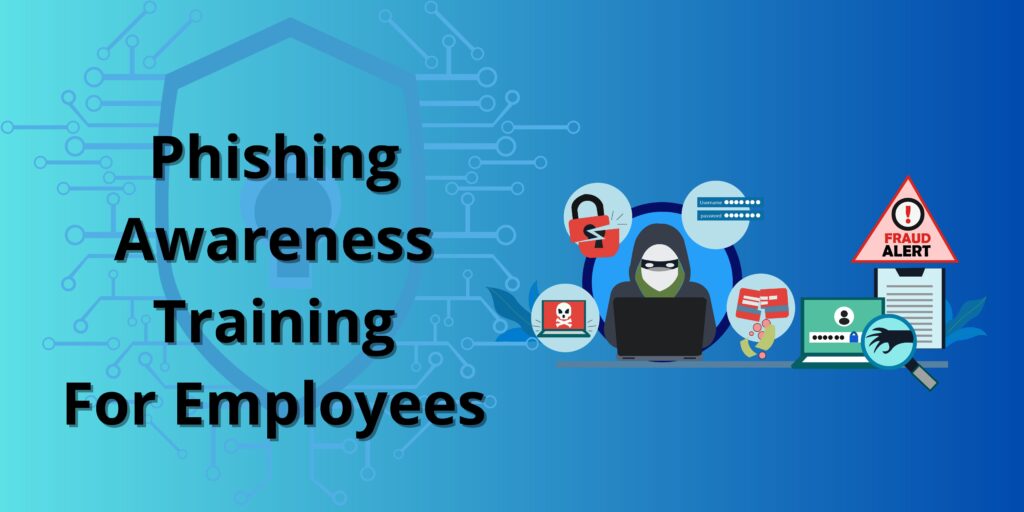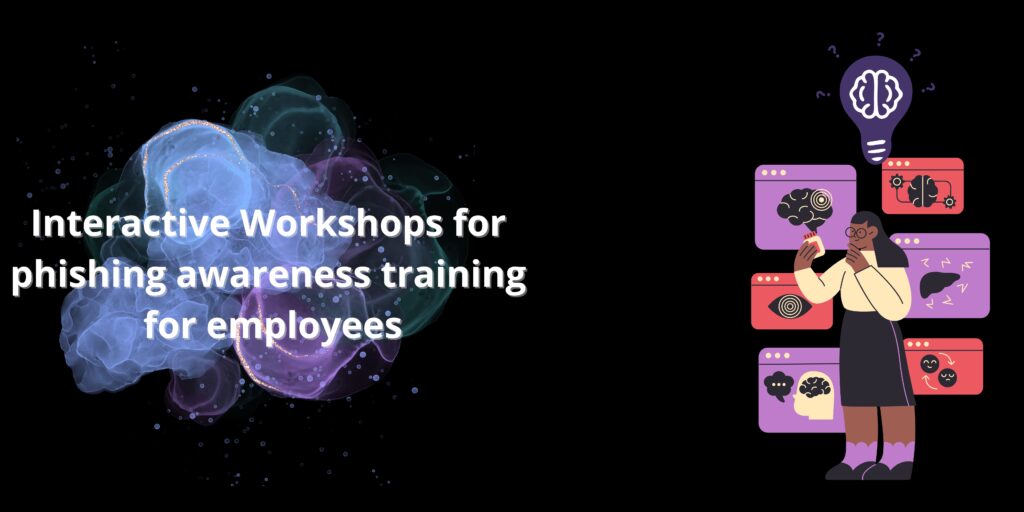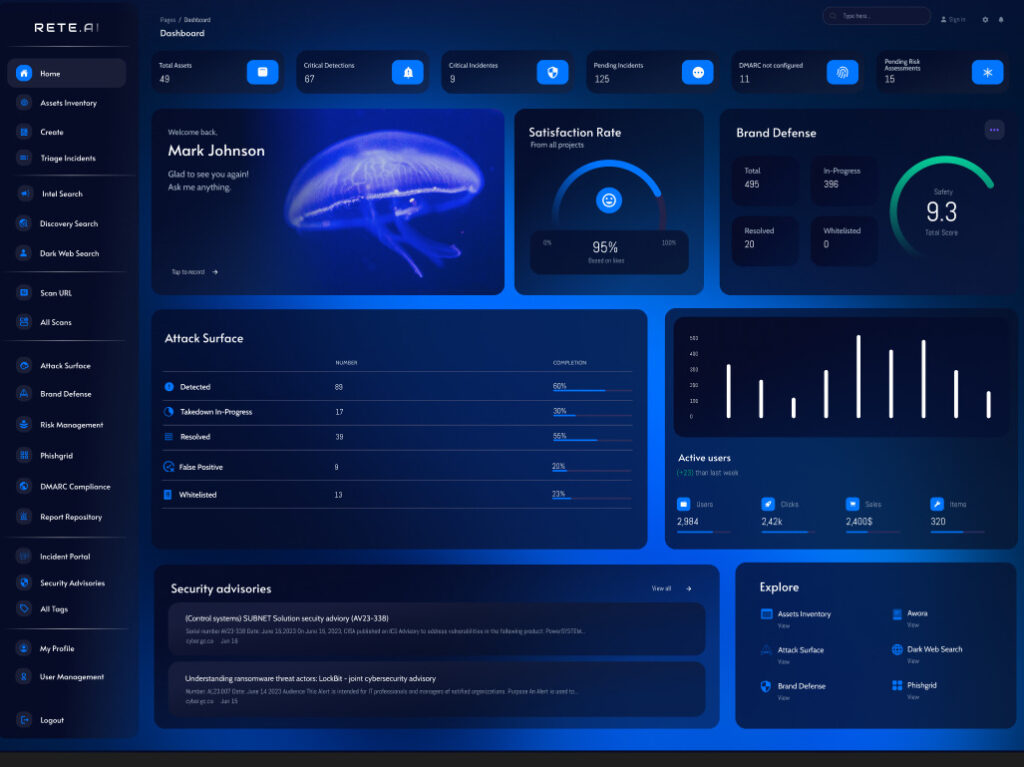Phishing Awareness Training for Employees: A Comprehensive Guide in 2024

In an era where digital threats loom large, businesses of all sizes face a critical challenge: safeguarding sensitive information against phishing attacks. The most sophisticated security systems can be compromised by a single click on a malicious link by an uninformed employee. In this article, we bring phishing awareness training for employees to the forefront of cyber security strategies in the contemporary business landscape.
Table of Contents
Introduction
As we delve into this comprehensive guide, we aim to equip employees with the knowledge and tools necessary to identify and thwart phishing attempts. From understanding the basics of phishing to implementing advanced preventive measures, this guide covers every aspect of phishing awareness training for employees, legal compliance, and technological solutions. Let’s embark on this journey to transform your workforce into the first line of defense in the battle against cyber threats.
What is Phishing?
Phishing is a cybercrime involving communication, typically email, that appears to be from a reputable source. Its goal is to lure individuals into providing sensitive data such as personally identifiable information, banking, and credit card details, and passwords. These attacks exploit human psychology rather than technological vulnerabilities, leveraging urgency, fear, or curiosity to manipulate users.
The Impact of Phishing on Business
The repercussions of phishing attacks extend far beyond immediate financial loss. They can result in data breaches, exposing customer and employee information, and lead to severe legal and regulatory consequences. Additionally, the indirect costs such as damage to brand reputation and customer trust can have long-lasting effects. In a digital ecosystem where trust is paramount, the impact of phishing on businesses is profound and multifaceted.
Phishing also acts as a gateway for more severe cyber-attacks, such as ransomware or advanced persistent threats (APTs), which can disrupt business operations. The increasingly sophisticated nature of these attacks necessitates a proactive and comprehensive approach to cybersecurity, with employee training playing a pivotal role. By understanding what phishing is and its potential impact, organizations can better prepare and protect themselves against these insidious cyber threats.
You can also read – Security Awareness Topics
Recognizing Phishing Attempts
The ability to recognize phishing attempts is crucial in preventing data breaches and financial loss. Phishing attacks come in various forms, and understanding their characteristics is key to effective defense which makes phishing awareness training for employees necessary
Email Phishing
Email phishing is the most common type. Attackers send emails that appear to come from legitimate sources, such as financial institutions, government agencies, or known contacts. These emails often create a sense of urgency or fear, prompting the recipient to disclose sensitive information, click on malicious links, or download infected attachments. Key indicators of email phishing include:
- Suspicious Sender Addresses: Look for subtle misspellings or domain changes.
- Generic Greetings: Phishing emails often use non-personalized salutations like “Dear Customer.”
- Grammatical Errors: Poor spelling and grammar can be a giveaway.
- Unsolicited Attachments or Links: Unexpected attachments or links should always be approached with caution.
- Request for Sensitive Information: Legitimate organizations rarely ask for sensitive information via email.
Spear Phishing
Spear phishing targets specific individuals or organizations. Unlike generic phishing, spear phishing is more sophisticated, often involving personalized information gathered from social media or other public sources. This type of attack might impersonate a colleague, supervisor, or a known contact, making it more challenging to identify. Vigilance, double-checking the source, and verifying unexpected requests through alternative communication channels are crucial in spotting spear phishing.
Whaling Attacks
Whaling attacks are a form of spear phishing directed at high-level executives (the “big fish”). These attacks often involve crafting emails that mimic the style and tone expected from senior leadership or important external partners. They might involve requests for transferring funds, providing confidential company information, or granting access to sensitive systems. Such attacks require an even higher level of scrutiny and often necessitate the involvement of multiple verification steps before any action is taken.
Preventive Measures
Preventative measures are essential in mitigating the risk of phishing attacks. These measures range from technical solutions to employee behavior guidelines.
Email Filters
Email filters are the first line of defense, automatically screening out many phishing attempts before they reach an employee’s inbox. These filters scan for known phishing signatures, suspicious sender addresses, and other red flags.
Regular Software Updates
Keeping software updated is crucial in defending against phishing attacks. Updates often contain patches for security vulnerabilities that could be exploited by attackers. This includes not only email systems but also operating systems, browsers, and other critical software.
Safe Browsing Practices
Educating employees on safe browsing practices can significantly reduce the risk of a successful attack. This includes:
- Verifying URLs before clicking: Hovering over links to see the actual URL and checking for legitimacy.
- Using secure connections: Ensuring websites use HTTPS, especially when entering sensitive information.
- Being wary of pop-ups and unsolicited downloads: These can often be gateways to malware.
Programs for Phishing Awareness Training for Employees
Phishing awareness training for employees is a cornerstone in the battle against phishing attacks. They empower employees with the knowledge and skills needed to identify and respond to phishing threats effectively.
Interactive Workshops for phishing awareness training for employees

Interactive workshops are an engaging way to educate employees about phishing. These sessions can include:
- Real-World Examples and Case Studies: Discussing past phishing incidents helps employees understand the tactics used by attackers.
- Role-Playing Scenarios: Employees can act out scenarios to practice identifying and responding to phishing attempts.
- Group Discussions: Encourages sharing experiences and strategies, fostering a collaborative approach to cybersecurity.
- Q&A Sessions: Allowing employees to ask questions and clear doubts increases their understanding and retention of information.
The goal of these workshops is not only to inform but also to encourage employees to think critically and remain vigilant.
Simulation Exercises for phishing awareness training for employees
Simulation exercises are practical tests of employees’ ability to recognize and react to phishing attempts. These can include:
- Mock Phishing Emails: Sending simulated phishing emails to employees to see how they respond. It’s important to follow up these exercises with feedback, highlighting what was missed or correctly identified.
- Phishing Quizzes: Interactive quizzes that test employees’ knowledge of phishing tactics and best practices.
- Incident Response Drills: Simulating a phishing-induced breach to test the organization’s response protocols.
These exercises provide a safe environment for employees to learn from mistakes without real-world consequences. They also help in identifying areas where additional training might be required.
Reporting and Response
A well-structured reporting and response protocol is essential in managing phishing attempts effectively. This involves establishing clear procedures and training employees on how to respond to suspected phishing attacks.
Internal Reporting Systems
Developing an efficient internal reporting system is crucial. Employees should be aware of whom to contact and how to report a suspected phishing attempt. Key aspects include:
- Clear Reporting Channels: Designate specific email addresses or internal tools for reporting suspicious messages.
- Prompt Reporting: Emphasize the importance of reporting potential phishing attempts immediately.
- Feedback Mechanism: Providing feedback on reported incidents encourages continuous reporting and helps in refining the detection process.
External Assistance
In some cases, external expertise is necessary, especially when a phishing attempt results in a data breach. This includes:
- Cybersecurity Firms: For investigating the breach, assessing the damage, and advising on mitigation strategies.
- Legal Counsel: To understand the legal implications, especially if sensitive data is compromised.
- Law Enforcement: Reporting to appropriate authorities can be necessary, especially for severe breaches.
Legal and Compliance Aspect
Understanding and adhering to legal and compliance aspects are paramount in the context of phishing and cybersecurity.
GDPR and Data Protection
For businesses operating within or dealing with the EU, adherence to the General Data Protection Regulation (GDPR) is mandatory. It involves:
- Data Protection Measures: Implementing strong cybersecurity practices to protect personal data.
- Reporting Data Breaches: GDPR mandates prompt reporting of data breaches, which can often result from successful phishing attacks.
Industry-Specific Regulations
Different industries may face specific regulations regarding data protection and cybersecurity, such as:
- Healthcare: Regulations like HIPAA in the U.S. mandate the protection of patient data, which can be a target of phishing attacks.
- Financial Services: Institutions are often subject to stringent data security regulations due to the sensitive nature of financial data.
Technological Solution
Incorporating advanced technological solutions is a vital strategy in enhancing an organization’s defense against phishing attacks. These solutions can provide automated safeguards and augment the human element of cybersecurity.
Anti-Phishing Software – Hunto.ai

Hunto.ai plays a critical role in identifying and neutralizing phishing threats. Key features include:
- Real-Time Scanning: Continuously monitors for phishing attempts in emails, websites, and other digital communications.
- Link Analysis: Examines URLs in emails and messages to detect malicious links.
- Alert Systems: Notifies users of potential phishing threats, helping to prevent accidental clicks on harmful links.
Authentication Protocols
Robust authentication protocols significantly reduce the risk of unauthorized access, even if phishing attempts are successful in capturing user credentials. These include:
- Two-Factor Authentication (2FA): Requires a second form of verification, such as a text message code or an authentication app, in addition to the password.
- Multi-Factor Authentication (MFA): Involves multiple methods of verification, enhancing security further.
- Biometric Authentication: Uses unique biological traits, like fingerprints or facial recognition, for user verification.
Maintaining Vigilance
The ever-evolving nature of phishing tactics necessitates continuous vigilance and adaptation of strategies to stay ahead of cybercriminals.
Regular Updates and Refresher Courses
Ongoing education is crucial in keeping employees informed about the latest phishing techniques and defense strategies. This includes:
- Regular Training Sessions: Keeps the knowledge fresh and addresses new phishing trends.
- Cybersecurity Newsletters: Provides updates on recent phishing scams and reminders of best practices.
- Online Resources and Learning Modules: Offers accessible and up-to-date information on phishing prevention.
Engaging with Cybersecurity Trends
Staying informed about cybersecurity trends allows organizations to proactively adjust their defenses against emerging phishing tactics. This can be achieved through:
- Cybersecurity Conferences and Seminars: Offers insights from industry experts and opportunities to learn about cutting-edge solutions.
- Collaboration with Cybersecurity Communities: Engaging in forums and networks provides a platform for sharing information and experiences.
- Regular Security Audits: Evaluate the effectiveness of current security measures and identify areas for improvement.
Conclusion
Phishing awareness training for employees is not just a one-time event but an ongoing process integral to the security posture of any organization. By combining employee education with robust technological solutions and staying vigilant about the latest threats, businesses can significantly mitigate the risks posed by phishing attacks. Regular training and updates are essential in creating a culture of cybersecurity awareness that can protect sensitive information and maintain the trust of clients and stakeholders.
FAQs for Phishing Awareness Training for Employees
What are the most common signs of a phishing email?
Common signs include suspicious sender addresses, generic greetings, urgent or threatening language, and requests for sensitive information.
How often should phishing awareness training for employees to be conducted?
Ideally, phishing awareness training for employees should be conducted annually, with regular updates on new phishing tactics and trends.
Can technology alone prevent phishing attacks?
While technology plays a crucial role, the human element is equally important. Employee vigilance and awareness are key to preventing successful attacks.






